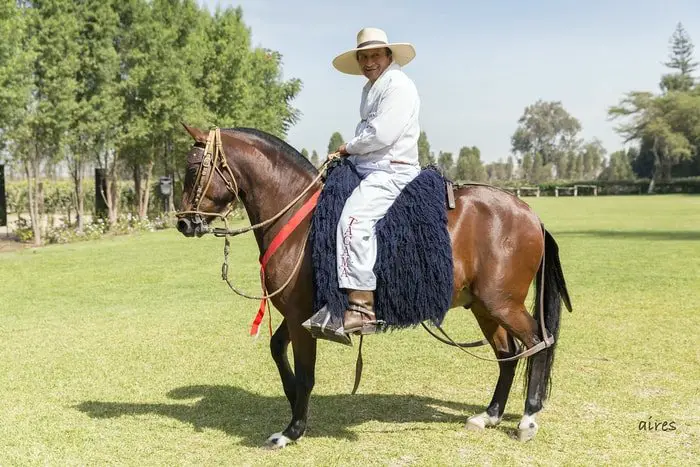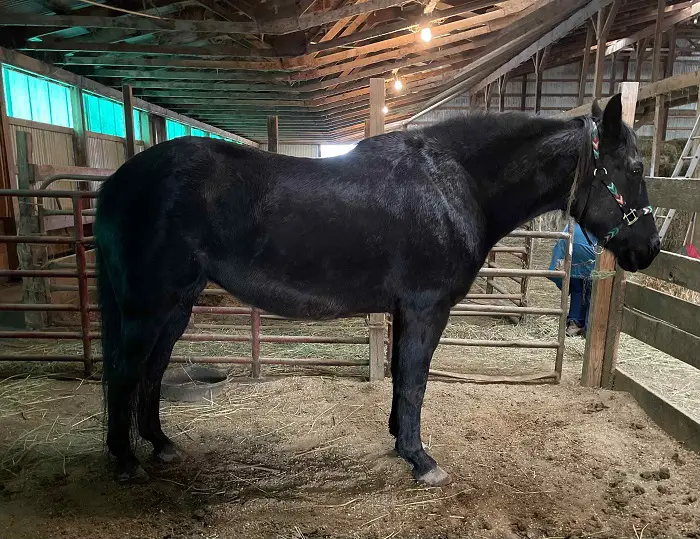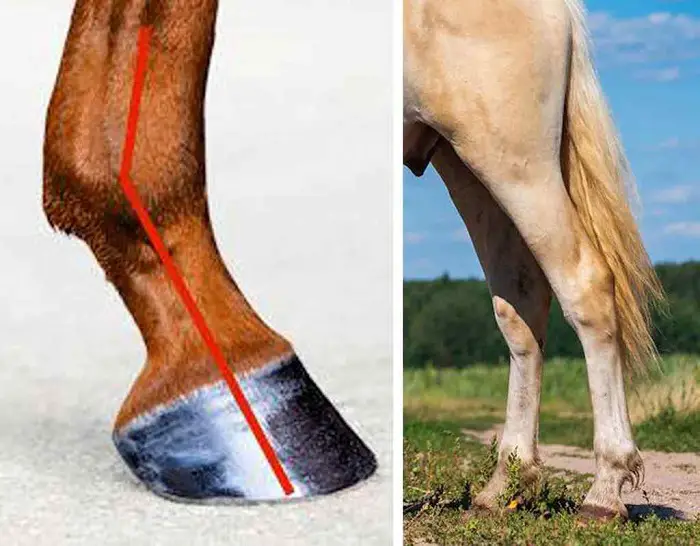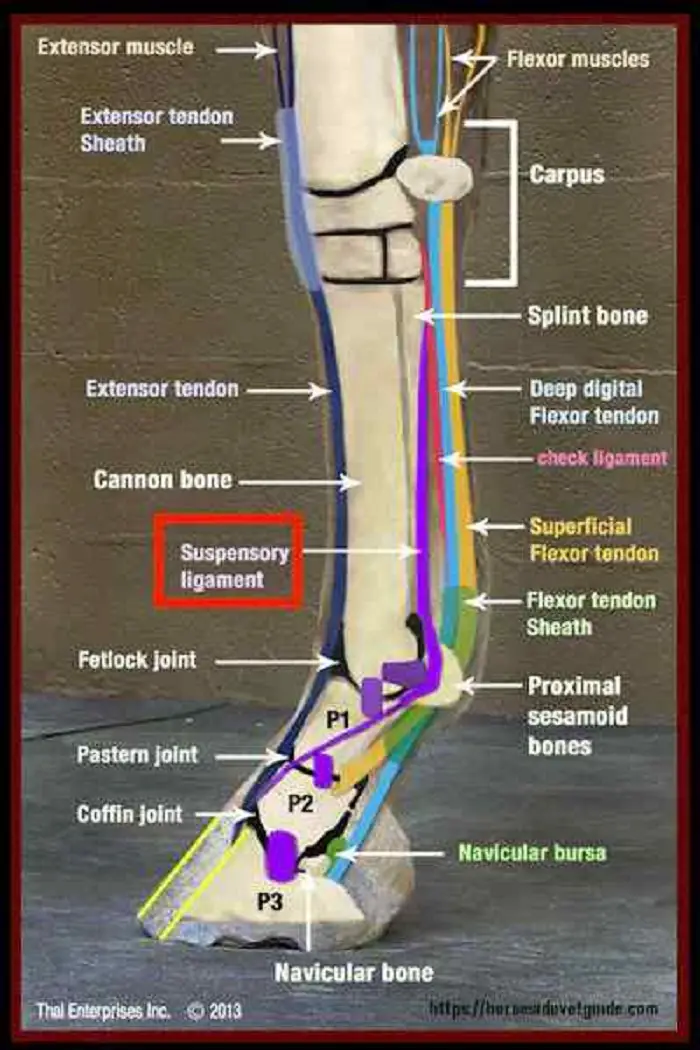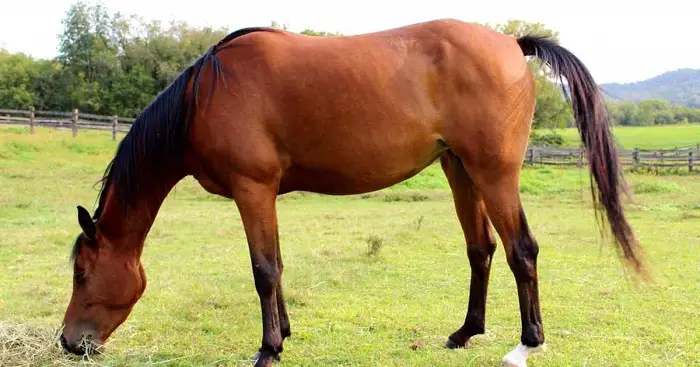DSLD in horses, which stands for Degenerative Suspensory Ligament Desmitis, is a condition that primarily affects horses and some other large animals. It is characterized by the degeneration of the suspensory ligament in the horse’s lower limbs. DSLDS can lead to severe lameness and reduced athletic performance, making it a significant concern for horse owners and veterinarians.
What causes DSLD in horses?
DSLDS is a progressive and degenerative condition affecting horses’ suspensory ligaments. It primarily occurs in the hind limbs but can also affect the front limbs. The exact cause of DSLD is not fully understood, and researchers are continuing to study the condition to gain more insights. However, there are several factors believed to be involved in its development:
- Genetics: Evidence suggests that DSLD may have a genetic predisposition. Certain horse breeds, such as Peruvian Pasos, Saddlebreds, and some Warmbloods, have a higher incidence of DSLD, indicating a possible hereditary component.
- Connective Tissue Abnormalities: DSLD is associated with abnormalities in the structure and composition of the affected ligaments. This suggests that underlying connective tissue disorders may contribute to the condition.
- Overloading and Stress: Excessive strain and repetitive stress on the suspensory ligament due to athletic activities, intense training, or inappropriate exercise regimens can contribute to developing DSLD.
- Conformational Issues: Horses with specific conformational problems may be more susceptible to DSLD. For example, horses with long, weak pasterns or those with poor limb alignment may experience increased strain on their suspensory ligaments.
- Age and Wear and Tear: DSLD tends to be more prevalent in older horses, indicating that age-related changes and cumulative wear and tear may affect the condition’s onset.
- Metabolic Factors: Some research has suggested that metabolic imbalances or issues may contribute to the development of DSLD, but this area requires further investigation.
What are the Symptoms of DSLD in Horses?
Degenerative Suspensory Ligament Desmitis (DSLD), also known as Degenerative Suspensory Ligament Disease (DSLDS), is a progressive condition affecting horses’ suspensory ligaments. The disease typically presents differently in individual horses, and the severity of symptoms can vary. Here are some common symptoms of DSLD in horses:
- Lameness: Lameness is one of the primary signs of DSLD. The lameness can be intermittent or persistent and may be more pronounced on certain surfaces or during certain activities.
- Swelling: The affected suspensory ligaments may show visible signs of swelling or enlargement. This swelling is often most noticeable in the lower limbs, usually just above the fetlock joint.
- Heat and Pain: The affected area may feel warmer to the touch than the surrounding tissues due to inflammation, and the horse may show signs of discomfort or pain when the affected limbs are palpated.
- Stiffness and Reduced Range of Motion: Horses with DSLD may exhibit stiffness in their gait, and their range of motion in the affected limb may be restricted.
- Abnormal Gait: As the condition progresses, horses may develop an abnormal gait characterized by a shortened stride or a toe-first landing of the affected limb.
- Changes in Hoof Growth: DSLD can sometimes affect the growth and shape of the hooves, leading to a dropped sole or a flattened appearance.
- Sagging Fetlocks: In advanced cases, the fetlock joint may appear lower than average (sagging fetlocks) due to the loss of support from the weakened suspensory ligaments.
- Loss of Performance: Horses with DSLD often experience a decline in athletic performance, as the condition can severely limit their ability to move comfortably and efficiently.
Diagnosis of Equine DSLD
Diagnosing Equine DSLD (Degenerative Suspensory Ligament Desmitis), also known as DSLDS (Degenerative Suspensory Ligament Disease), requires a thorough evaluation by a qualified veterinarian. Since DSLD is a progressive and often complex condition, a combination of clinical examination, diagnostic imaging, and sometimes even a biopsy may be necessary to arrive at an accurate diagnosis. Here are the critical steps involved in diagnosing DSLD in horses:
- Clinical Examination: The veterinarian will conduct a comprehensive clinical examination of the horse. This includes observing the horse’s gait, looking for signs of lameness or abnormal movement, and palpating the suspensory ligaments and surrounding structures for swelling, heat, pain, or other abnormalities.
- Medical History: The veterinarian will ask about the horse’s medical history, any recent changes in performance or behavior, and the duration and progression of any lameness or gait abnormalities.
- Diagnostic Imaging: Ultrasonography is a valuable tool for assessing the suspensory ligaments. High-frequency sound waves create real-time images of the ligaments, allowing the veterinarian to evaluate their structure and detect any signs of degeneration or injury.
- Radiography (X-rays): In some cases, X-rays may be taken to assess the bones and joints in the affected limb. While DSLD primarily affects the suspensory ligaments, it can also lead to bone density or alignment changes.
- Biopsy: In more challenging cases, a small tissue sample (biopsy) may be taken from the affected suspensory ligament to examine it under a microscope. A biopsy can help rule out other conditions and confirm the presence of degeneration characteristic of DSLD.
- Rule Out Other Conditions: The veterinarian may need to rule out other causes of lameness and suspensory ligament injuries, such as tendonitis, ligament injuries, or osteoarthritis.
- Genetic Testing: While not always necessary for diagnosis, genetic testing may be considered in some instances, especially if there is a suspicion of a genetic predisposition to DSLD.
Differential Diagnosis of DSLD
Diagnosing DSLD (Degenerative Suspensory Ligament Desmitis), or DSLDS (Degenerative Suspensory Ligament Disease), in horses requires ruling out other conditions that can present with similar clinical signs. Since DSLD shares symptoms with other musculoskeletal and lameness issues, a thorough differential diagnosis is essential to ensure an accurate diagnosis. Some of the conditions that veterinarians may consider in the differential diagnosis of DSLD include:
- Tendonitis: Tendonitis in horses is inflammation of a tendon, which can cause lameness and swelling in the affected area. It may be mistaken for DSLD, especially when the suspensory ligament is involved.
- Suspensory Ligament Injuries: Other injuries to the suspensory ligament, such as strains or tears, can cause lameness and swelling, similar to DSLD.
- Osteoarthritis: Osteoarthritis in horses, also known as degenerative joint disease, can lead to lameness, stiffness, and joint swelling, which can be mistaken for DSLD.
- Navicular Syndrome: Navicular syndrome affects the navicular bone and surrounding structures, causing lameness and gait abnormalities that may be confused with DSLD.
- Fractures or Bone Injuries: Fractures or other bone injuries in the limb can cause severe lameness and swelling, which may initially appear similar to DSLD.
- Laminitis: Laminitis is a condition affecting the sensitive laminae inside the hoof, and in some cases, it can lead to lameness and changes in gait.
- Septic Arthritis: Septic arthritis in horses is a bacterial infection in a joint, causing lameness, heat, and swelling, which may be similar to some DSLD symptoms.
- Neurological Conditions: Some neurological conditions can present with gait abnormalities, which may initially be mistaken for lameness.
- Other Connective Tissue Disorders: Since DSLD is related to connective tissue abnormalities, conditions that affect other connective tissues in the body may have similar features.
- Caudal Heel Pain (Navicular Bursitis): Caudal heel pain can cause lameness and discomfort in the rear portion of the foot, leading to gait changes that might be confused with DSLD.
Treatment of Equine Degenerative Suspensory Ligament Desmitis
Unfortunately, there is no cure for Equine Degenerative Suspensory Ligament Desmitis (DSLD). DSLD is a progressive and degenerative condition that affects the suspensory ligaments in horses, and it can be challenging to manage. Treatment primarily focuses on providing supportive care and pain management to maintain the horse’s comfort and quality of life. Here are some common approaches used in the management of DSLD:
- Rest and Controlled Exercise: Rest is essential to allow the suspensory ligaments to heal and reduce further damage. Controlled exercise, under the guidance of a veterinarian, may be prescribed to maintain joint mobility and muscle strength without placing excessive stress on the affected ligaments.
- Anti-Inflammatory Medications: Non-steroidal anti-inflammatory drugs (NSAIDs) may be prescribed to reduce pain and inflammation associated with DSLD. However, long-term use of NSAIDs should be carefully monitored due to potential side effects.
- Physical Therapy and Rehabilitation: Physical therapy techniques, such as therapeutic ultrasound, laser therapy, and massage, can help improve circulation, reduce inflammation, and enhance the healing process.
- Supportive Bandaging or Wrapping: In some cases, supportive bandaging or wrapping of the affected limb may be recommended to provide additional support to the suspensory ligaments.
- Orthopedic Shoeing: Proper shoeing or trimming of the hooves can help alleviate pressure on the suspensory ligaments and improve the horse’s comfort and gait.
- Nutritional Support: A balanced diet with appropriate supplementation may be recommended to support overall health and joint function. Consult a vet or equine nutritionist to prepare the best dietary plan for the horse’s needs.
- Pain Management: In advanced cases where pain management becomes challenging, the veterinarian may discuss additional pain relief options.
- Monitoring and Reevaluation: Regular veterinary check-ups and reevaluations are essential to monitor the progression of DSLD and adjust the treatment plan as needed.
- Assistive Devices: In some cases, horses with DSLD may benefit from assistive devices, such as supportive boots or braces, to help stabilize the affected limbs.
Can a Horse Recover from DSLD?
There is no known cure for Equine Degenerative Suspensory Ligament Desmitis (DSLD), and complete recovery from the condition is not typical. DSLD is a progressive and degenerative disease that affects the suspensory ligaments in horses, leading to structural changes and functional impairment.
The degenerative nature of DSLD means that the suspensory ligaments gradually weaken and deteriorate over time. This can result in chronic lameness, gait abnormalities, and reduced athletic performance. Unfortunately, the damage done to the ligaments is usually irreversible.
However, it is essential to note that the progression of DSLD can be managed, and supportive care can be provided to improve the horse’s comfort and quality of life. Treatment approaches often focus on pain management, controlled exercise, physical therapy, and appropriate shoeing or trimming to support the affected limbs. With proper management, some horses with DSLD can maintain a good quality of life and continue to be ridden or lightly exercised, depending on the severity of the condition.
Prognosis of DSLD in Horses?
DSLD is a complex and multifactorial condition, and researchers are still studying its underlying mechanisms.
Since the exact cause is unknown, there is no definitive way to prevent DSLD in horses. However, certain factors are believed to contribute to its development, including genetics, overloading and repetitive stress on the suspensory ligaments, conformational issues, age-related changes, and possibly metabolic factors.
The prognosis for DSLD in horses can vary depending on the severity of the disease, the individual horse’s response to treatment and management, and the level of supportive care provided. Some horses may experience periods of stability or improvement with appropriate management, while others may continue to deteriorate despite treatment efforts.
Concluding Remarks on DSLD in Horses
Degenerative Suspensory Ligament Desmitis (DSLD), also known as Degenerative Suspensory Ligament Disease (DSLDS), is a challenging condition affecting horses’ suspensory ligaments. As of my last update in September 2021, DSLD remains a complex and poorly understood disease with no known cure.
While DSLD is a challenging condition, early detection, appropriate management, and attentive care can help improve the horse’s comfort and well-being. Veterinarians and horse owners must work together to develop a comprehensive approach to manage DSLD and provide the affected horse with the best possible quality of life.
